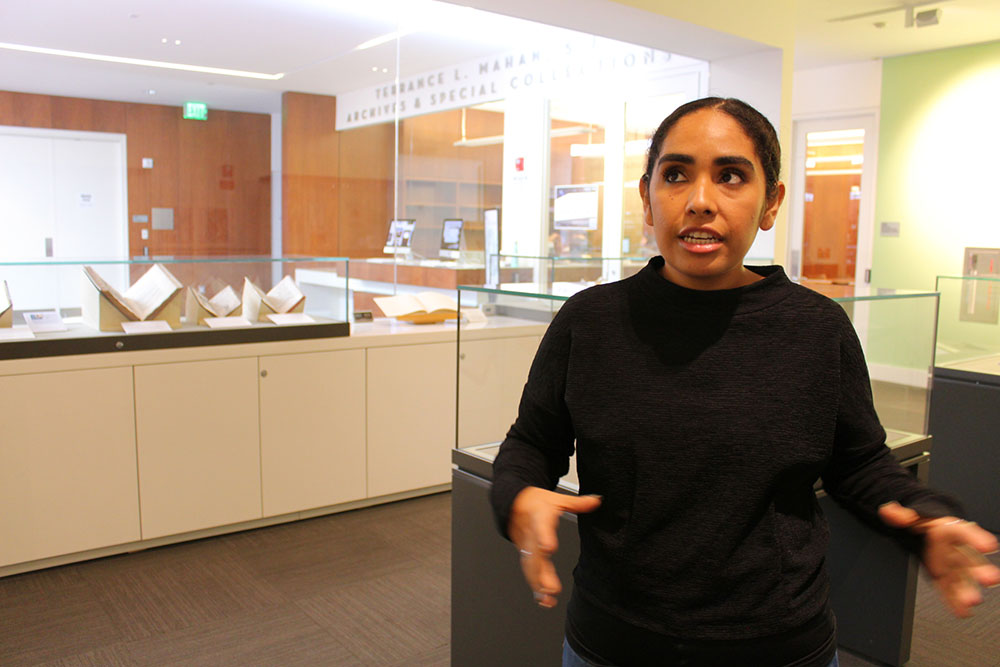
As the Archives and Special Collections Intern in the William H. Hannon Library last year, English graduate student Mayra Cortez (M.A. ’17) curated an exhibit in the Archives and Special Collections gallery, on view through December 16. Titled “So Short a Lease: Early Reflections on the Human Timeline,” the exhibit unearthed art from early modern Europe about mortality, time, and the meaning of a good life. Cortez has a bachelor’s degree from UCLA in English and African American Studies with a Spanish minor.
What was your role in curating this exhibit?
As the graduate intern for Archives and Special Collections, my role was to create an exhibit from scratch: researching, selecting and presenting items that reflected an assigned topic. The library had planned this exhibit to connect to LMU’s Bellarmine Forum, a conference about “The Values of Time,” so that theme guided my planning. I began my research with J.T. Fraser, the founder of the International Society for the Study of Time. Going through his papers, I found a quote that was to inspire and essentially form the entire exhibit: “Man is … a desiring, suffering, death-conscious and hence, a time conscious creature.” The relationship between life, death and time was what I chose to explore. Researching the library’s archival collection, I found literary and art works that related to three interesting traditions that became the heart of the exhibit: Memento Mori (Remember We All Must Die), Ars Moriendi (The Art of Dying) and Ars Vivendi (The Art of Living). All together, this exhibit is a look into the way people of the 16th and 17th centuries reconciled time in relation to life, death and faith. Once all of the items were chosen, labels were created and edited with assistance from the Head of Archives and Special Collections Cynthia Becht, who helped me bring it all together in a coherent and professional way. She and her wonderful staff were then responsible for the actual installation.
What’s your favorite artifact or image you found in your research for this project?
All of the artifacts were amazing. I honestly loved every single image; the depictions of time in relation to life, death and faith were beautiful, powerful and morbid, but I was fascinated by them. My absolute favorite artifact is an emblem book that had never been on display before: Otto van Veen’s Le Theatre Moral de la Vie Humaine. In it is a wonderful set of images depicting a young man welcoming Father Time into his home. In the next frame, the young man is now old and Father Time is exiting the house; the implication is that the old man will soon be on his death bed. The notion of welcoming time as a guest and being equally as hospitable as you say farewell is a beautifully hopeful way to reconcile life/death and time, and I personally loved that.
Do you have an internship or assistantship this year?
I actually do. This fall, I was very fortunate to begin working as a graduate assistant at the Marymount Institute for TSEHAI Publishers with Elias Wondimu and Theresia de Vroom. The role has given me a chance to see up close all the work that goes into publishing a book. All of the presses and imprints housed in the institute are grounded in social justice and are committed to lifting up voices that are too often ignored; I am excited to support an establishment with such an important mission. Plus, seeing the work that goes making a manuscript into a published book is just amazing.
Learn more about all English graduate internships and assistantships.



